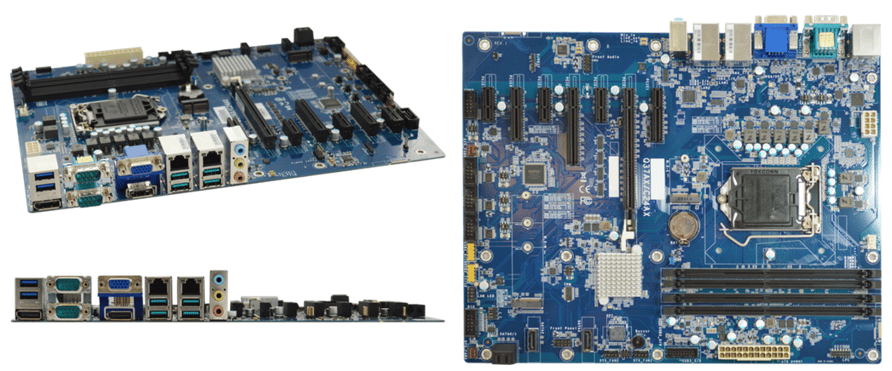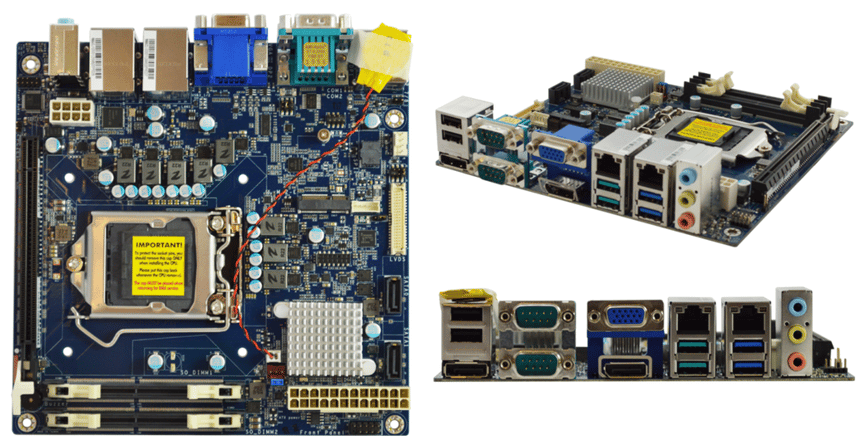Features & Benefits | Coffee Lake C246 ATX & MINI ITX Motherboards
| Martin Rudloff
Hello everyone! We are finally done and our new line of C246 chipset flagship motherboards have been out for a short while and we are excited to tell you more about them.
The Intel C246 chipset, also code-named Coffee Lake, is the follow-up to our Q170 chipset based motherboards. We were looking for high performance, and as much connectivity and flexibility as we possible could, and I believe we were able to design a quite spectacular board! If you are not familiar with the C246, the Q370 or even the Coffee Lake names let me help you out. The Coffee Lake family of Intel based chipsets was initially launched in 2018, and consisted of Q370 (desktop chipset) and the C246 (workstation chipset). They are virtually identical, with the notable exceptions of ECC-memory and XEON processor support, only available on the C246 chipset.
As we really wanted high performance, we decided early on to choose the C246 chipset as our main selection, but were eager to understand what else Intel had in mind. By the end of 2018, we were informed that Intel would release a Coffee Lake refresh line of processors, with higher performance and core counts. This enhanced performance would come with a price, as the power requirements for the motherboard design went up. We changed our initial specifications to account for Coffee Lake R support and started adding the kitchen sink to our board.
Adding the 15 year life cycle warranty from Intel to the list of features makes this board even more appealing!
I will try to list all the features that we were able to “cram” into this board, and I’m sure you will agree this is one amazing board!
PCI-Express slots and Bifurcation:
This is where we spent a lot of time working on so I will start here first. You may not know that the PCIex16 slots commonly used for graphic cards (PEG), comes directly from the processor, and can be broken down to 2 x8, 4 x4 and more different topologies. This is called bifurcation. The most common bifurcation support on other company’s motherboards is the 2 x8 bifurcation. Typically this is implemented in an automatic mode. If you plug a graphic card into the PEG, bifurcation mode is disabled, and the secondary slot is disabled too. For bifurcation to work, a card with fewer lanes, for example x8, needs to be plugged into the PEG, allowing for the second slot to work at x8 too.
We decided to add a jumper to either enable or disable bifurcation, putting you in the driver’s seat.
So if you plug in a powerful graphics card into the PEG slot, but would also like to have a high-end RAID controller (typically x8), a 10Gb fiber controller or even another graphics card, you can enable bifurcation and still have the option to use the RAID, the fiber or the second graphics card. The graphic cards will be running at x8 speed, but with PCIe3.0 support, the performance different is less noticeable than you would expect. Our performance tests indicated that most higher-end graphic cards tested did not suffer in performance when running at x8 instead of x16. The control is in your hands
Besides supporting manual x16 and x8 bifurcation, we also moved the PEG slot one over from its more traditional location (slot#7), to slot#6. This dramatically decreases the complexity when needing a riser card in rackmount systems. Now, instead of having a riser card plugged into a smaller x1 or x4 slot, the riser can be firmly installed into the x16 slot, increasing reliability and ruggedness. For non-rackmount configurations, it also allows for less wasted space, as the x4 slot behind the PEG is not blocked by a double-wide graphics card.

Figure 1: C246 ATX Embedded Industrial Motherboard
Memory:
The C24AX supports up to 128GB of ECC or non-ECC DDR4, 2667MHz memory (4x 32GB)
Processor:
Designed to support all of the 8th and 9th GEN processors on the Intel Embedded roadmap, including the new 8-core i7 and embedded XEON processors. (Ask our Sales for a complete list)
Graphics:
Powerful graphics engine, supporting 2 DP++ (dual-mode DisplayPort), allowing for less expensive converters and daisy-chaining, and a VGA connector for easy backwards compatibility
Rich USB ports:
4x USB3.1 GEN2 ports, supporting up to 10Gb/s, but maintaining full backwards compatibility and standard USB type-A connectors.
4x USB3.1 GEN1 ports, also known as USB3.0, supporting up to 5GB/s. 2 in the rear I/O, 2 on a standard 20pin front panel header.
4x USB2.0 internal headers for additional flexibility and support of less demanding peripherals.
Serial Ports:
6 full handshake RS232 ports, 2 in the rear I/O (DB9), and 4 on 10 pin internal headers. COM1 and COM3 can easily be configured to either RS422 or RS485 by BIOS selection (no jumpers!)
Ethernet:
2 Intel 1GbE Ethernet ports, with wake-on-LAN capability
M.2 and SATA
We always think a lot about backwards compatibility and how to accommodate as many different applications as possible (see serial ports…), but were way too excited about M.2 to let it pass. We added both an M.2 2230 E-key connector for all your communication needs (Wi-Fi, BT, etc), and an M.2 2280 M-key connector with full x4 support for you SATA or NVM storage needs. The performance of the newer M.2 NVM drives will blow you away.
We didn’t forget the need for higher capacity, so we have 4 SATAIII ports, 2 of them horizontal, to help clear any oversized card, and 2 vertical ports with cables for SATADOM support (7+2).
MISC
We added a slew of additional features, like a watchdog timer, 8-bit GPIO header, fully monitored CPU and chassis fans, an LPC header and many others.

Figure 2: C246 MINI ITX Embedded Industrial Motherboard
About Corvalent:
Texas-based Corvalent supports embedded developers and OEMs with rugged, customized, made-in-America industrial computing and GPU optimized workstation system products. Ensuring longevity by design since 1993, Corvalent offers smart, flexible hardware and software solutions for connected embedded and mission critical applications, enabling reliable high performance computing on-premise, in the cloud, or via customized hybrid architectures. The company offers custom materials planning and advisory services; real-time engineering to address any technology or platform; modification of COTS or standards-based solutions for unique, mission critical applications; and elite, white glove technical support. For more information, call 888-776-7896
About the Author
